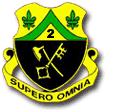mdiehl
Posts: 5998
Joined: 10/21/2000
Status: offline

|
That's basically the story. A note of detail, NACA's preliminary tests showed that the turbo slightly hampered performance in 1939, (but of course, all the tests were at low altitude for the reasons given by Raverdave) so the turbo was removed. With it, the P39 *in 1939* had a ceiling of 30K feet and a top speed of (IIRC) about 390 mph.
The 1942 P39s were not given tscs (trubosuperchargers) for several reasons: first, a general shortage of same, with tscs reserved for the P40 and newly arriving P38s, second, most of the P39s in critical theaters were in place, and, third, (this is speculation on my part), there may have been space/design considerations that made the problem more complicated than merely adding a tsc to the existing engine. For one thing, the P39 was an unusual a/c, with the engine located *aft* of the pilot. That's a fairly narrow space to accomodate a field-installed tsc I suppose.
In 1942 Bell was asked to reintroduce the P39 with some rounded out f/b capability. It entered production as the slightly larger but generally similar P63, with a tsc and a top speed in the high 390s-low 400s. It bears the distinction, IIRC, of being the only major first-line US made fighter not to serve in combat for the US during WW2 (being primarily used for training and lend-lease).
|
 Printable Version
Printable Version








 New Messages
New Messages No New Messages
No New Messages Hot Topic w/ New Messages
Hot Topic w/ New Messages Hot Topic w/o New Messages
Hot Topic w/o New Messages Locked w/ New Messages
Locked w/ New Messages Locked w/o New Messages
Locked w/o New Messages Post New Thread
Post New Thread